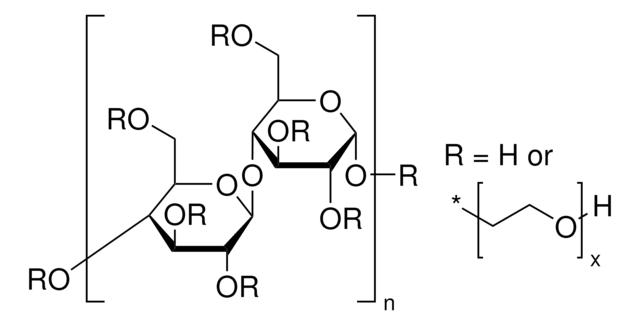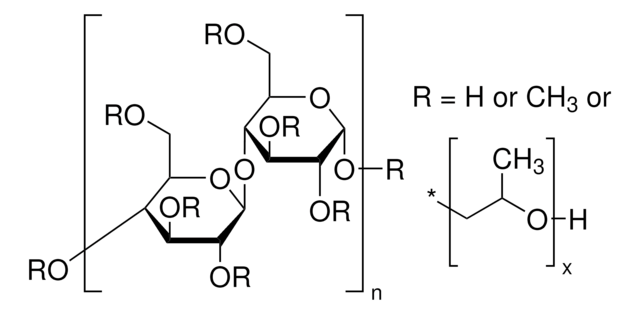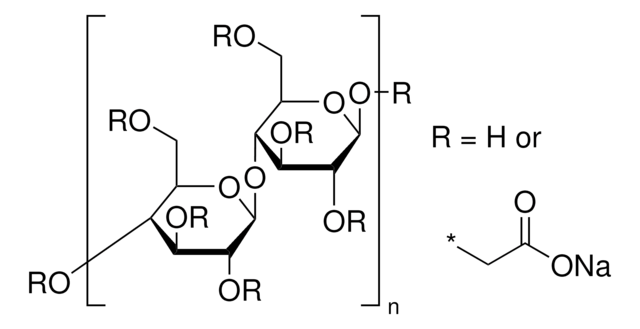191906
Hydroxypropyl cellulose
average Mw ~1,000,000, powder, 20 mesh particle size (99% through)
About This Item
Recommended Products
description
biological oxygen demand (BOD) 14,000 ppm
form
powder
autoignition temp.
752 °F
mol wt
average Mw ~1,000,000
impurities
<5 wt. %
particle size
20 mesh (99% through)
pH
5.0-8.5
interfacial tension mineral oil
12.5 dyn/cm, 0.1 wt. % in H2O (vs. mineral oil)
viscosity
1,275-3,500 cP, 1 wt. % in H2O(25 °C, Brookfield, spindle #3) (30 rpm)(lit.)
solubility
H2O: insoluble (above 45 °C)
polar organic solvents: soluble
density
0.5 g/mL at 25 °C (lit.)
SMILES string
N(C)(C)c1cc(c(cc1)C(N)CC)C
InChI
1S/C12H20N2/c1-5-12(13)11-7-6-10(14(3)4)8-9(11)2/h6-8,12H,5,13H2,1-4H3
InChI key
RRHXDYJWVYFMKV-UHFFFAOYSA-N
Looking for similar products? Visit Product Comparison Guide
Related Categories
Application
- Thermo-responsive aqueous foams: Hydroxypropyl cellulose has been studied for its properties as a green polymer that can alter its solubility with temperature changes, making it suitable for responsive foam applications (Braunschweig, 2019).
- Interaction mechanism in aqueous solutions: A study on the interaction between hydroxypropyl cellulose and water in solutions, focusing on the importance of polymer chain length in determining the physical properties of the solutions (Martin-Pastor and Stoyanov, 2020).
- Corrosion inhibition: Hydroxypropyl cellulose has shown effectiveness as a corrosion inhibitor for aluminium in acidic environments, highlighting its potential in material science and engineering applications (Nwanonenyi et al., 2019).
- Orally disintegrating films: This application involves the formulation design of hydroxypropyl cellulose films, aiming to enhance the delivery and dissolution profile of pharmaceuticals, making it significant in drug delivery and pharmaceutical sciences (Takeuchi et al., 2018).
Storage Class Code
11 - Combustible Solids
WGK
WGK 1
Flash Point(F)
Not applicable
Flash Point(C)
Not applicable
Personal Protective Equipment
Choose from one of the most recent versions:
Already Own This Product?
Find documentation for the products that you have recently purchased in the Document Library.
Customers Also Viewed
Our team of scientists has experience in all areas of research including Life Science, Material Science, Chemical Synthesis, Chromatography, Analytical and many others.
Contact Technical Service



